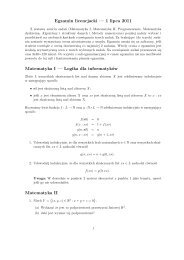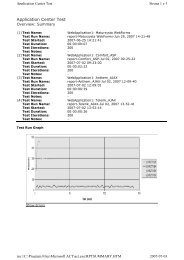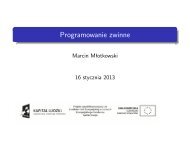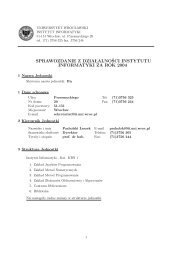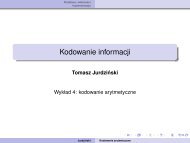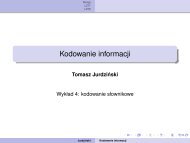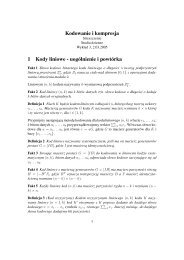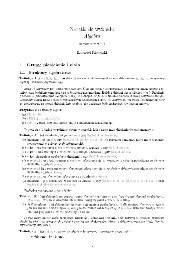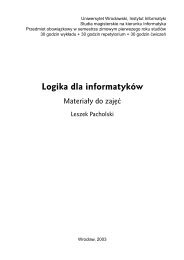Introduction to Flight Simulation (List 2)
Introduction to Flight Simulation (List 2)
Introduction to Flight Simulation (List 2)
Create successful ePaper yourself
Turn your PDF publications into a flip-book with our unique Google optimized e-Paper software.
<strong>Introduction</strong> <strong>to</strong> <strong>Flight</strong> <strong>Simulation</strong> (<strong>List</strong> 2)<br />
Due: 19 oc<strong>to</strong>ber 2010<br />
In this list, we will simulate planets and asteroids. Download the files<br />
vec<strong>to</strong>r.h andplanets.cpp and theMakefile from the homepage of the course.<br />
In the main program, the sun is set in the origin with zero speed. Its mass<br />
equals 1.9891.10 30 kg. The mass of the earth equals 5.9736.10 24 kg. Its initial<br />
distance is set at 152098232km from the sun, and its initial speed is set at 29.78<br />
km/s.<br />
1. The gravitational force between two objects with masses m 1 , m 2 , and distance<br />
r is given by the following formula:<br />
F = G m 1m 2<br />
r 2 .<br />
In this formula, G is a constant, the gravity constant. The formula defines<br />
only the strength of the gravitational force, not its direction. The direction<br />
is defined as follows: Both of the masses feel the force F. The first mass<br />
m 1 feels the force in the direction of m 2 . The second mass m 2 feels the<br />
force in the direction of m 1 .<br />
Complete the function computegravity( ) that adds the gravity force<br />
between two objects <strong>to</strong> the <strong>to</strong>tal forces working on the objects.<br />
2. Comlete function method integrate( double h ) of struct object .<br />
At this moment, I do not know how <strong>to</strong> integrate with a good convergence<br />
order. Just write a primitive algorithm.<br />
3. Complete the program, so that it can simulate the orbit of the earth<br />
around the sun. The time <strong>to</strong> complete one orbit should be approximately<br />
one year.<br />
4. Add the moon <strong>to</strong> the system. The mass, speed and distance between the<br />
moon and the earth can be found at Wikipedia.<br />
5. Look up at Wikipedia what is a horseshoe orbit. Add an asteroid <strong>to</strong> the<br />
solar system, that is in a horse shoe orbit. Take a weight of 1000kg for<br />
the asteroid.<br />
1
6. Look up at Wikipedia what are the Lagrangian points. Since it appears<br />
that the points L 4 and L 5 are stable, it must be possible <strong>to</strong> put an asteroid<br />
in these points. Add an asteroid <strong>to</strong> the solar system that stays close <strong>to</strong><br />
either L 4 or L 5 .<br />
2




